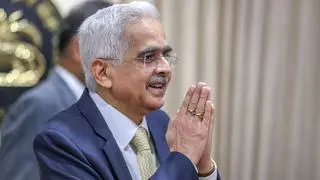After a burst of development that saw 1,800 MW of solar photo-voltaic capacity being built, things have slowed down in the solar power sector.
Gujarat’s feed-in tariff programme kick-started the solar movement, creating over 800 MW of capacity.
Under the Government of India’s National Solar Mission, 627 MW of capacity has come up, with another 30 MW or so likely to be commissioned shortly. All this happened in just three years.
But things are now at a standstill. Phase II of the National Solar Mission, long overdue, is nowhere in sight. Several States, including Odisha, Madhya Pradesh and Karnataka, have launched their own solar programmes, but these are all very modest.
Tamil Nadu and Andhra Pradesh showed promise, each seeking to create over 1,000 MW capacity. Andhra Pradesh’s plans have been undone by political hurdles.
In Tamil Nadu, the bedrock of solar policy was the ‘solar purchase obligation’ imposed on specific consumer classes. But the matter is in court. Projects with a capacity of 708 MW are ready to be signed.
A ‘consultative paper’ by the State’s Electricity Regulatory Commission, recommending a low tariff of Rs 5.78 a unit, has compounded the uncertainty. The industry is worried on the bearing this will have on the 708 MW waiting to be signed, where the tariff — Rs 6.48 a unit with an annual escalation of five per cent for ten years — was discovered through a bidding process.
There is one big positive for the sector, and it has nothing to do with megawatts of capacity. It is about the tiny, solar power systems providing basic electricity to villages and transforming them.
As of the June 30 this year, 10,154 villages, which would never have got electricity otherwise, are being supplied with solar-based power at a cost of Rs 714 crore.
Funds have been sanctioned for another 2,500 villages. It’s a bright spot for the industry.






Comments
Comments have to be in English, and in full sentences. They cannot be abusive or personal. Please abide by our community guidelines for posting your comments.
We have migrated to a new commenting platform. If you are already a registered user of TheHindu Businessline and logged in, you may continue to engage with our articles. If you do not have an account please register and login to post comments. Users can access their older comments by logging into their accounts on Vuukle.